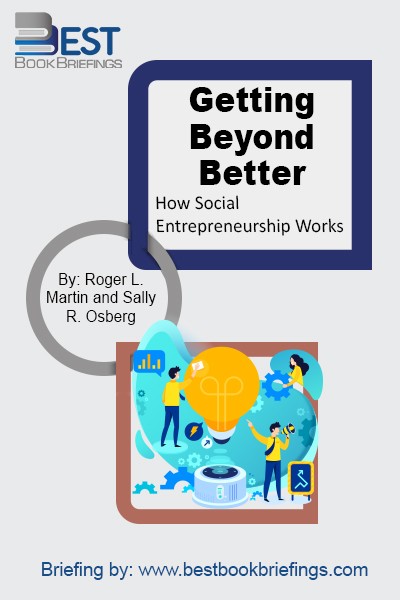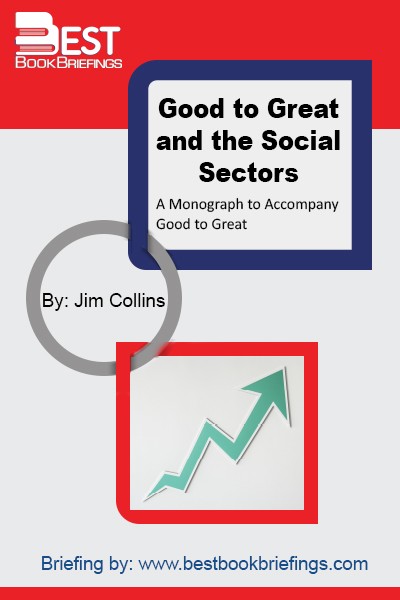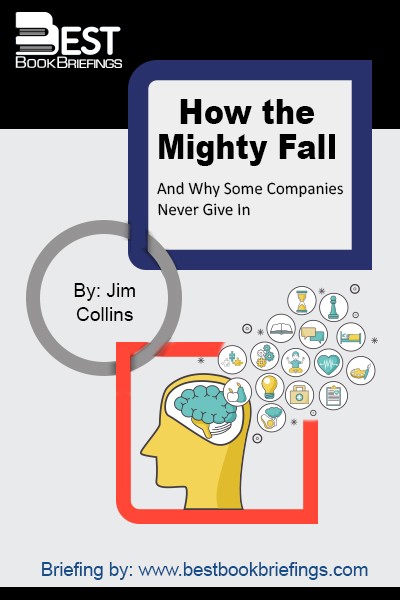Good to Great and the Social Sectors
A Monograph to Accompany Good to Great
Number of pages: 35
Publisher: Harvard Business Press
BBB Library: Corporate Success
ISBN: 9780977326402
Editorial Review
The idea that the path from good to great in the social sectors is to become “more like a business” is dead wrong. Great companies make a prosperous society, but not a great society for economic growth and power are the means, not the end, of a great nation. Few businesses excel to greatness. They’re about as only 11 out of 1435 companies—according to my estimates in my previous book “Good to Great”. So, is it unwise to import the practices of business into the social sectors? I shared these thoughts with a gathering of business CEOs, and offended nearly everyone in the room. A hand shot up from a CEO: “Do you have evidence to support your point? He demanded. “Nonprofits are in desperate need of discipline in people, governance, and allocation of resources.” I replied: “Discipline is not a business practice! Most businesses also need discipline. A culture of discipline is not exclusively a principle of business; it is a principle of greatness.” I asked the CEO: “If you had taken a different path in life and become, say, a university president, a nonprofit leader, or a hospital CEO, would you have been any less disciplined in your work? Would you have put less energy into your work?” The CEO considered the question, and replied: “No!”
Book Reviews
Books on Related Topics

Social intelligence is defined as the ability to get along well with others while winning their cooperation. Social intelligence is a combination of sensitivity to the needs and interests of others, which is sometimes called your social radar, an attitude of generosity and consideration, and a set of practical skills for

Good enough is no longer good enough because now everything is good enough. Our expectations of quality are unrealistic, and are being met every single day. We don’t just want to be satisfied, we want to be blown away. A few months after the book came out, Seth ran into a

The 8th Habit consists of a two-part solution; “find your voice and inspire others to find theirs.” Finding your voice means to engage in the work that genuinely taps your talents and fuels your passion and discovers your most intimate capabilities. Your voice then becomes a metaphor representing the essence of

Getting Beyond Better sets forth a bold new framework, demonstrating how and why meaningful change actually happens in the world and providing concrete lessons and a practical model for businesses, policymakers, civil society organizations, and individuals who seek to transform our world for good. Roger L. Martin and Skoll Foundation President

Built to Last has influenced many executives and entrepreneurs since it was originally published in 1994. It outlines the results of a six-year research project into what makes enduringly great companies. Filled with hundreds of specific examples and organized into a coherent framework that can be applied by managers and entrepreneurs

From the world’s leading thinker on innovation and New York Times bestselling author of The Innovator’s Dilemma, Clayton M. Christensen, comes an unconventional book of inspiration and wisdom for achieving a fulfilling life. Christensen’s The Innovator’s Dilemma, notably the only business book that Apple’s Steve Jobs said “deeply influenced” him, is





